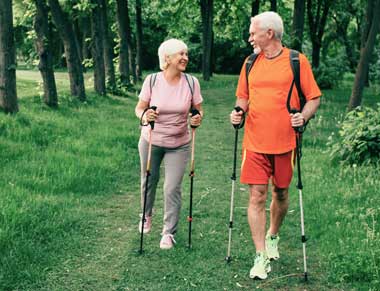 According to the Centers for Disease Control and Prevention, falls are the leading cause of injury and death in adults age 65 and older. Falls can increase the risk of elderly death and cause moderate to severe injuries such as hip fractures and head traumas. Falls cause most fractures among older adults. The most common fractures are of the spine, hip, arm, hand, leg, ankle and pelvis.
According to the Centers for Disease Control and Prevention, falls are the leading cause of injury and death in adults age 65 and older. Falls can increase the risk of elderly death and cause moderate to severe injuries such as hip fractures and head traumas. Falls cause most fractures among older adults. The most common fractures are of the spine, hip, arm, hand, leg, ankle and pelvis.
Who is at risk?
- White men have the highest fall-related death rates, followed by white women, black men and black women. Older Hispanics have lower fatal fall rates than non-Hispanics.
- Over 95 percent of hip fractures are caused by falls. Women sustain about 80 percent of all hip fractures.
- The risk of falling and being seriously injured in a fall increases with age and is greater for women than men.
- Adults age 75 and older who fall are four to five times more likely than those age 65 to 74 to be admitted to a long-term care facility.
- Many people who fall develop a fear of falling. Fear of falling is linked to decreased mobility and social activity and increased risk of falling.
Researchers found some modifiable risk factors, including lower body weakness, problems with walking and balance and taking four or more medications. People can modify these risk factors by exercising regularly and focusing on increasing leg strength and improving balance. Tai Chi exercises have been shown to be very effective. Lack of exercise and physical activity can result in decreased muscle strength, loss of bone mass and loss of balance and flexibility.
Discuss your health conditions and concerns with your doctor. Have your doctor review your medicines for side effects and interactions that may increase risk of falling. Talk about what you can do to reduce the risks.
Prevention tips:
- Exercise regularly. Focus on increasing leg strength and improving balance. Talk with your doctor to identify an exercise plan that is right for you.
- Discuss your health conditions with your doctor. Certain ear and eye disorders may increase risk of falls. Have your vision and hearing tested regularly.
- Stand up slowly after eating, resting or lying down. Getting up too quickly can make you feel faint.
- Use a cane or walker to help you feel steadier when you walk. Arrange furniture and other objects so they are not in your way.
- Wear rubber-soled, low-heeled shoes to fully support your feet.
- Make your home safer by improving lighting throughout the home, removing tripping hazards, having grab bars next to the toilet and in the tub or shower and handrails on both sides of stairways.
For help with strength training and preventing falls, check out the websites for Stay Strong, Stay Healthy and A Matter of Balance. These MU Extension programs may offer classes in your area and can provide additional information and resources.
References
Centers for Disease Control and Prevention, Older Adult Falls.
Centers for Disease Control and Prevention, Facts about falls.